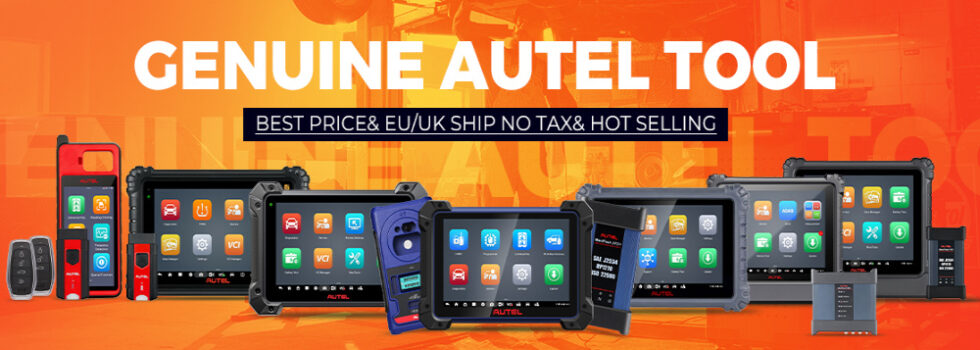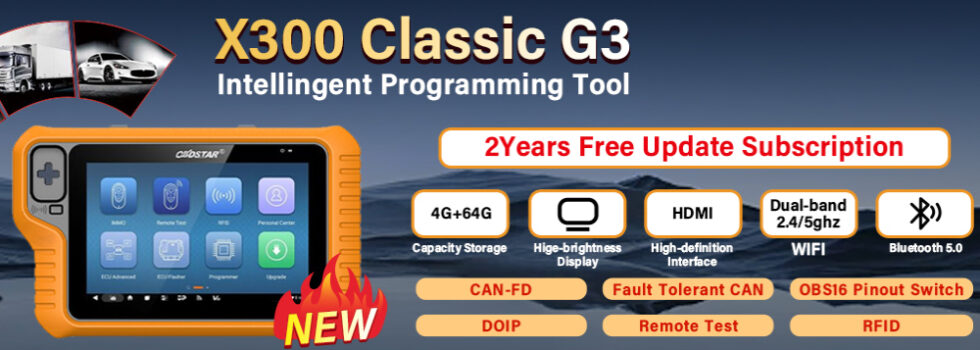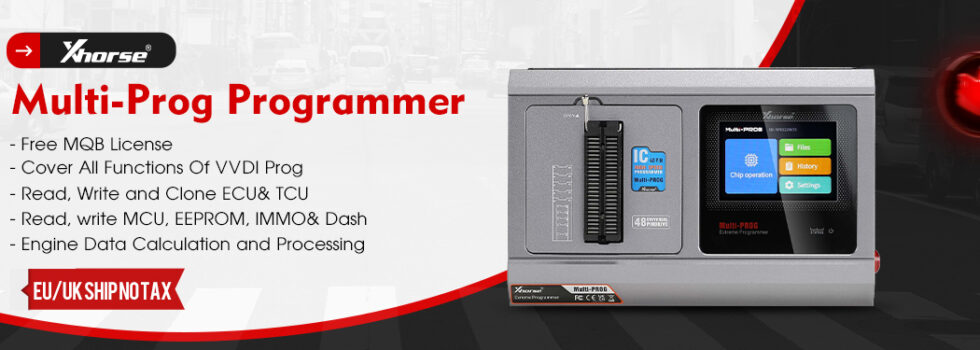Car OBD2 Scanner
OBD2 auto scanner become a famous car diagnostic tool,Car tool,diagnostic scanner,and Vehicle diagnostic tool
OBDII product has a varies of auto tools. for example,ECU Program,DPF Reset (dpf regeneration),TPMS reset(Tire Pressure Monitor System),TPMS Sensor Decoder, Code Reader, Locksmith Tool,Odometer Program,Key Program.Truck Diagnostic(lorry scan tool),Key Blanks,
ECU Program:ECU Program mean:ECU Tuning (Chip tuning) refers to changing or modifying an erasable programmable read only memory chip in an automobile’s or other vehicle’s electronic control unit (ECU) to achieve superior performance, whether it be more power, cleaner emissions, or better Fuel efficiency. Engine manufacturers generally use a conservative electronic control unit map to allow for individual engine variations as well as infrequent servicing and poor-quality fuel. Vehicles with a remapped electronic control unit may be more sensitive to fuel quality and service schedules.
What’s the ECU :Electronic control unit, a generic term for any embedded system that controls one or more of the electrical systems or subsystems in a motor vehicle
DPF Reset (dpf regeneration)
What’s the DPF
DPF : Diesel particulate filter,A diesel particulate filter (or DPF) is a device designed to remove diesel particulate matter or soot from the exhaust gas of a diesel engine.
regeneration is the process of removing the accumulated soot from the filter. This is done either passively (from the engine’s exhaust heat in normal operation or by adding a catalyst to the filter) or actively introducing very high heat into the exhaust system. On-board active filter management can use a variety of strategies:
- Engine management to increase exhaust temperature through late fuel injection or injection during the exhaust stroke
- Use of a fuel borne catalyst to reduce soot burn-out temperature
- A fuel burner after the turbo to increase the exhaust temperature
- A catalytic oxidizer to increase the exhaust temperature, with after injection (HC-Doser)
- Resistive heating coils to increase the exhaust temperature
- Microwave energy to increase the particulate temperature
All on-board active systems use extra fuel, whether through burning to heat the DPF, or providing extra power to the DPF’s electrical system, although the use of a fuel borne catalyst reduces the energy required very significantly. Typically a computer monitors one or more sensors that measure back pressure and/or temperature, and based on pre-programmed set points the computer makes decisions on when to activate the regeneration cycle. The additional fuel can be supplied by a metering pump. Running the cycle too often while keeping the back pressure in the exhaust system low will result in high fuel consumption. Not running the regeneration cycle soon enough increases the risk of engine damage and/or uncontrolled regeneration (thermal runaway) and possible DPF failure.
TPMS reset ( Tire-pressure monitoring system )
A tire-pressure monitoring system (TPMS) is an electronic system designed to monitor the air pressure inside the pneumatic tires on various types of vehicles. TPMS report real-time tire-pressure information to the driver of the vehicle, either via a gauge, a pictogram display, or a simple low-pressure warning light. TPMS can be divided into two different types – direct (dTPMS) and indirect (iTPMS). TPMS are provided both at an OEM (factory) level as well as an aftermarket solution. The target of a TPMS is avoiding traffic accidents, poor fuel economy, and increased tire wear due to under-inflated tires through early recognition of a hazardous state of the tires.
Has your tire pressure monitoring system (TPMS) light come on? This light can be a frequent and unwelcome visitor. Most of the time we can just shoo the TPMS light away, but before we do, we have to make sure the light is not on for a reason.
First off, please check the tire pressure at all four wheels with a tire gauge. Our parents, wives, husbands, etc. are always nagging us to keep one in the car, so there should be one lying around. If not, most gas stations have them available for purchase. Make sure all tires are within the recommended tire pressure range. This PSI varies depending on make and model of the vehicle and also what kind of tires are on the vehicle. If you are not sure what PSI the tires should be at, please give us a call so we can advise you. If the pressure is low please fill to the correct PSI.
Secondly, do a visual inspection of each tire. Check for nails, bulges, visible deflation or any irregularities. If there is noticeable damage please do not risk driving to the dealership as this can cause the tire to have a blow-out.
If you notice the TPMS light coming on during the blistering hot days of a high plains summer, or the frigid nights of a Rocky Mountain winter, this is likely because Colorado’s extreme temperature changes can cause the tire pressure to fluctuate and trigger the light. Also, if you’ve recently swapped your tires from winter to summer, or vice versa, this can trigger the TPMS light. If you’ve swapped the tires in our service department we will reset the light for you. Unfortunately, many independent shops do not know to reset the tire pressure light in this situation.
Important: Check the pressure in ALL of your tires, not just the one that triggered the TPMS Warning Light. Why? Because you may have other tires that are also low, but not low enough to trigger the warning light.
Code Reader
A car code reader is one of the simplest car diagnostic tools that you’ll find. These devices are designed to interface with a car’s computer and report trouble codes in a very no-frills sort of way. Cars and trucks that were built prior to 1996 require specific, proprietary OBD-I code readers, and newer vehicles use universal OBD-II code readers. This type of car code reader is typically inexpensive, and some parts stores and shops will even read your codes for free.
How Does a Car Code Reader Work?
Computer controls started to show up on cars in the late 1970s and early 1980s, and these systems rapidly grew in complexity. Even very early computer controls included basic “on board diagnostic” functionality, and these early, OEM-specific systems are collectively referred to as OBD-I. In 1995, for the 1996 model year, automakers around the world started transitioning toward the universal OBD-II standard, which has been in use ever since.
Both OBD-I and OBD-II systems work in essentially the same way, in that they monitor a variety of sensor inputs and outputs.
Locksmith Tool
A locksmith is someone who specializes in locks. Anyone who has been locked out of their car or home is probably familiar with one of the services a locksmith offers, but locksmiths do a lot more than helping people get back into their locked homes. This profession is quite ancient; as long as there have been locks and keys to fit them, there have been people to specialize in them. In addition to handling locks, some locksmiths also work in security consulting, since locks are one way to control access to something.
As with any profession with “smith” in the title, locksmiths originally fabricated locks and keys from metal, although modern locksmiths also work with electronic locks, ranging from key cardentry systems to biometric locks. Locksmiths install, repair, and adjust locks in everything from cars to office buildings, and they also offer services to people who are locked out or individuals who want to consult with someone about their security systems.
Locksmiths must be prepared to open key locks and keyless entry systems in today’s market. They often use slim jims and other automotive entry tools including lockout tools & kits, emergency car entry kits, tryout keys plus auto jigglers. Unless you are considering becoming an automotive locksmith it is best to leave it to the professionals.
Odometer ReProgram
Odometer is an instrument that tells you the distance – usually in kilometers or miles – a wheeled vehicle has traveled based on the number of turns made by its wheels.
Odometer Program is Odometer chip reprogram,Because of some reason,many car owner want to modify the language of the odometer chip.Modern cars often employ digital odometers specially designed to be difficult to tamper. These odometers are considered to be more secure than mechanical odometers due to the greater amount of technical knowledge required to manipulate its value, and potentially allow the odometer reading to be cryptographically secured to prevent alteration.
Here’s how to reprogram your digital odometer to read whatever mileage you want. It great for cluster swaps, as in my case I swapped a Lexus ES300 cluster into my Toyota Solara.
Many cars store digital odometer values on the instrument cluster itself. It’s stored on a little chip on the speedometer circuit board; it’s called an EEPROM chip, usually of the 93C46, 93C56 or 93C66 variety.
Once you get access to the chip by opening the cluster, it can be de-soldered and either swapped or reprogrammed.
I have gone through extensive testing and decoded the chip to present the following procedure. I’ve worked with Toyota Camry, Solara and Lexus ES300 clusters which are all interchangeable, but the procedure should be the same for many, many cars that use a similar chip setup, with only the programming differing.
What is the difference between a speedometer and an odometer?
A speedometer or a speed meter is a gauge that measures and displays the instantaneous speed of a vehicle.
Disclaimer
It’s perfectly okay to change your odometer reading by yourself. However, it is illegal to roll back or misrepresent the mileage without disclosing to a potential purchaser of your vehicle that the odometer has been tampered with. Keep clean!
Key Program
What’s the Auto Key Program
When you lost your auto key, and you should need a new key to copy original data in your lost one,and then auto key programming tool was became more important for you
If you’ve lost your car keys (please read this first) replacement will normally need to cover at least two elements – the key blade being cut to the correct configuration and the key’s transponder chip (see here) being programmed (so the vehicle starts).
The third element can be programming of remote locking, although this is normally just a luxury feature and not essential to be able to gain entry and drive the vehicle. See Programming Instructions for remote locking here.
If you’ve lost your car key and have no spares, do not despair. Many auto locksmiths and main dealers can cut your car key configuration from the chassis number of your vehicle. You can get the chassis number off your registration document (log book) and may need to provide it also as proof that you are the genuine owner of the vehicle. Some garages may ask for 2 forms of ID in addition to the log book.
To program the key’s chip (transponder chip) manufacturers normally supply a code card with the vehicle when new. This card contains a unique code which is normally concealed below a scratch strip so only the owner of the vehicle should be able to see it. Main dealers and auto locksmiths will normally require this code so they can program your key’s transponder chip to your vehicle.
Even without this code certain auto locksmiths may be able to get you up and running but it will normally require more jiggery pokery – reprogramming of the transponder receiver unit or ECU in the vehicle.
1 .What’s the Transponder car key
A transponder chip disarms a vehicle immobiliser when the car key is used to start the engine. The majority of keys to cars built after 1995 contain transponderchips
When the car key is turned in the ignition, the engine control unit (ECU) on the car sends an electronic message to the key, and it will allow the car to start only provided it receives the correct message back. So, even for a simple car key without any buttons, the key must be cut correctly to turn the locks, and also programmed correctly to disarm the immobiliser. Car keys with chips can be programmed using special programmers.
2.What‘s the Remote keyless system
A keyless entry system is an electronic lock that controls access to a building or vehicle without using a traditional mechanical key. The term keyless entry system originally meant a lock controlled by a keypad located at or near the driver’s door, that required pressing a predetermined (or self-programmed) numeric code for entry. These systems, having evolved into a hidden touch-activated keypad, are still available on certain Ford or Lincoln models.
The term remote keyless system (RKS), also called keyless entry or remote central locking, refers to a lock that uses an electronic remote control as a key which is activated by a handheld device or automatically by proximity.
Widely used in automobiles, an RKS performs the functions of a standard car key without physical contact. When within a few yards of the car, pressing a button on the remote can lock or unlock the doors, and may perform other functions. A remote keyless system can include both a remote keyless entry system (RKE), which unlocks the doors, and a remote keyless ignition system (RKI), which starts the engine.
3.What’s the Smart key
A smart key is an electronic access and authorization of system that which is available as an option or standard in several cars. It was first developed by Siemens in 1995 and introduced by Mercedes-Benz under the name “Key-less Go” in 1998 on the W220 S-Class following its design patent filed by Daimler-Benz on May 17, 1997.
Truck Diagnostic(lorry scan tool)
Key Blanks
Source:
https://en.wikipedia.org/
http://www.programyourkeys.com/Lost_Car_Keys.html



